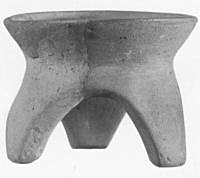Book Review

ALASDAIR WHITTLE (ed.). The Early Neolithic on the Great Hungarian Plain: investigations of the Körös culture site of Ecsegfalva 23, County Békés (Varia Archaeologica Hungarica XXI). xii+810 pages in 2 volumes, 428 b&w & colour illustrations, 149 tables. 2007: Budapest: Archaeological Institute of the Hungarian Academy of Sciences & Cardiff: School of History and Archaeology, University of Cardiff; 978-963-7391-90-3 both volumes; 978-963-7391-91-0 vol. I; 978-963-7391-92-7 vol. II; hardback.
Review by Detlef Gronenborn
Römisch-Germanisches Zentralmuseum, Mainz, Germany
(Email: gronenborn@rgzm.de)
The beginnings of farming in Central Europe are one of the most durable-and most exciting-topics of prehistoric archaeology. It has seen a revival in recent years, with the addition of new disciplines such as archaeogenetics and palaeoclimatic studies. Moreover, novel fundamental archaeological research has also been conducted and the volume edited by Alasdair Whittle presents one of these new site contributions.
The book comes in two volumes and is divided into 32 chapters written by a variety of scholars. The treatment of the subject is thus both thorough and diverse. A foreword from Eszter Banffý from the Archaeological Institute of the Hungarian Academy of Sciences and the editor's introduction describe the background to the undertaking: the original aims were to seek explanations for the transition to agriculture in the Hungarian plain and thus bridge the gap between the Mesolithic and the Neolithic in the study area. As so often, these goals had to be slightly modified after the project had begun and the first results obtained: the site of Ecsegfalva 23 in south-eastern Hungary did not belong to the earliest Körös phase but rather dates between 5750 and 5650 cal BC, hence the immediate contact phase between the latest hunter-gatherers and the earliest farmers remained elusive-a problem well known in western Hungary too. Nevertheless, another central element of the original strategy was to conduct detailed and fine-grained excavations of one site in order to study its embedding in the physical environment and the different ways humans responded to the particularities of this environment. This has certainly been achieved.
After a brief research history on the Körös culture by Whittle where the wider project framework and specific aims are described in greater detail, there follows a series of contributions on the environmental setting of the site, the fluvial plains of the river Berettyó, a tributary to the river Tisza. Katherine Willis follows with an interesting study on the environmental impact of the early farmers: she concludes that the settlement had only minor effects on the landscape, notably clearances were minimal as opposed to later Neolithic cultures.
The environmental part is succeeded by chapters on the chronology (14C dating), economy (goat/sheep herding, cattle rather uncertain, cereal farming, hunting, fishing, gathering), architecture, foodways, pottery and lithics. Of particular interest is the study of the architectural remains, i.e. daub fragments, by Ângela Carneiro and Inna Mateiciucová. The various impressions on the clay pieces allow a reasonably well founded reconstruction of Körös structures as light post constructions with reed-daub walls. This is not new, but lends greater accuracy and certainty to previous reconstruction hypotheses. The economy was based on keeping goats and sheep and small scale farming, while wild resources also contributed to the diet; hunting, however, is described as 'opportunistic'. It appears that early Körös farmers in a way experimented with the new economy. Of interest too is the chapter by Inna Mateiciucová on the obsidian and flint artefacts: she was able to link the great majority of the material to her 'Danubian' craft tradition which has its technical antecedents in the late Mesolithic of southern Central Europe. A glance at the figures does indeed confirm this classification-narrow but regular blades with pronounced bulbs and primary facetted striking platforms together with trapezes may be found on late Mesolithic and early Neolithic sites of southern Germany and Austria. However, the Ecsegfalva assemblage differs from western European sites in the composition of the raw materials. Obsidian clearly shows its eastern Hungarian embedding.
In the final summary Alasdair Whittle and László Bartosiewicz present their conclusions in subtle, thoughtful and diversified ways. A picture emerges of a relatively small site, densely occupied by light houses and shelters with wooden posts and reed walls. Animals appear to have lived within the habitation space, and daily activities were concentrated between the buildings. Garden plots would have surrounded the hamlet. All this ended around 5650 cal BC in flames-whether intentionally or accidentally remains unknown. Lastly, drawing on the concept of 'conviviality' (connected to agency theories where everyday life is performed according to socially established standards and aesthetically pleasing concepts), Whittle paints the final picture of what constituted life at Ecsegfalva (emotions and memories influenced by herding, fishing and gardening) and how it began, flourished and ended. He appears to favour a dramatic scenario in which the village was abandoned and burned deliberately in connection with the death of an inhabitant. His final image of a woman (found buried at the site) working sinew with her teeth and reflecting on her ancestors, is captivating-a fine imagery of British, and to this extent only British, Neolithic archaeology.
Apart from its value for the archaeology of the Körös tradition the book has other, more general implications: unlike scholars from the continent some British colleagues have adopted an almost global viewpoint, producing broad-scale models for the transition to agriculture. With this volume continental prehistoric archaeology is assured that detailed single site reports have not become unfashionable. Moreover, after some rather shallow British post-processual meanders of the past decade, the volume is convincing with its emphasis on sound data. Indeed, Whittle and his co-authors are to be congratulated: the book will remain a landmark for the Neolithic archaeology of the borderlands between South-eastern and Central Europe for many years to come.



